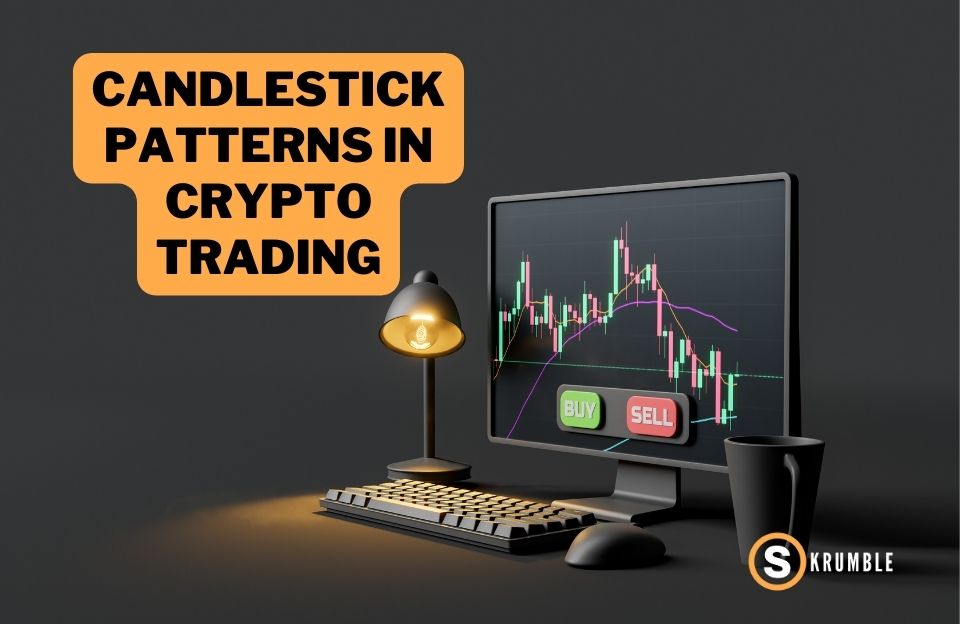Luis Clark
What is Margin Trading?
Luis Clark

Financial markets are constantly searching for fresh, cutting-edge approaches to increase profits while minimizing risk. Trade on margin can prove to be revolutionary for investors who are looking to maximize their financial gains. Margin trading allows you to boost your earnings by borrowing money from a brokerage firm and trading on margin with money you don’t own. In essence, it allows traders to control larger positions with a smaller amount of their own capital. This borrowed money is referred to as “margin”.
Despite its appeal, there are significant risks in margin trading and you are required to deposit additional cash which can lead to severe consequences if it is not managed properly. If you are an experienced stock trader looking for more sophisticated approaches or someone who is just starting her journey in stock trading, this article will give you helpful insights into the world of margin trading and the challenges that come with it.
What is Margin Trading?
In the financial markets, a margin is an assurance that needs to be deposited by the investor with their exchange platform or broker. This borrowed money acts as the credit risk the brokerage firms or exchanges are taking on.
Instead of a typical brokerage account, you will require a dedicated margin account. The margin account is a brokerage account where you store the borrowed money from the broker. You borrow this money to purchase securities such as stocks, mutual funds, or bonds which you cannot buy with the funds previously present in your account.
Trading with margin accounts is different compared to trading with traditional cash accounts. In cash account trading, you purchase securities utilizing your own funds to carry out the entire purchase transaction. Investing your own money comes with more risk for you and more money out of your pocket.
The Financial Industry Regulatory Authority (FInRa) and the Securities and Exchange Commission (SEC) are the authoritative entities that control margin trading. They have set up strict margin rules on the amount of deposit cash, limits to borrowing money, and the funds that must always be present in your bank account for participating in margin trading.
Margin Loan
Margin means borrowing money and working on a similar concept to using the securities and cash already present in your account as collateral value for your loan. The margin loans give you access to more money that you can use for both investment and personal requirements.
Just as with a traditional loan that comes with an interest rate, you will be required to pay interest on the margin loan with the collateral attached. Margin loans come with many risks that have to be considered. There are always chances that margin interest rates will shoot up and you have to figure outa way to manage a higher interest rate than you originally planned.
Integral Parts of Margin Trading
There are some important components of trading on margin that are essential to the entire ecosystem. You must have a thorough understanding of these concepts to be able to take full advantage of margin trading.
Minimum Margin

A brokerage firm cannot open a margin account without your consent. The margin account can be part of the agreement for your standard account or it can be a completely separate agreement. You are required to make an initial investment to open a margin account and maintain it over time. The minimum equity requirement is $2,000, but it can be even greater for some brokerage firms.
Initial Margin
After you open a margin account and it has been made operational, you are allowed to borrow only 50% of the stock price. The part of the purchase price that gets deposited represents the initial margin. While the majority of brokers require an initial margin of 50%, it is important to be aware that you can also pay lesser margins such as 10% or 30%. Some firms ask you for an initial margin greater than 50%.
Maintenance Margin
On top of initial margin requirements, which is the minimum margin account equity required to open the account, you will also need to pay for maintenance margin. The maintenance margin requirement is the amount that has to always be present in your margin accounts once you have made a purchase.
The cost of your maintenance requirement is based on the value of the securities you hold and the trades you are participating in. It is also dependent on whether your trades are currently bringing in profit or they are going into losses. An increase in the value of your holdings will translate directly to an increase in the maintenance requirements.
The maintenance requirement is calculated by multiplying the active closing price of open positions and the number of leverages and contracts that are in your possession. You should regularly check the value of the securities you own to make sure you always have the necessary funds in your margin account to cover the maintenance margin requirements.
Credit limit works hand in hand with the maintenance margin. There should be enough cash in your margin accounts that are not being utilized for trading to act as protection in case a trade takes the wrong turn.
Margin Call

Margin calls are the most dreaded outcomes for margin traders. A margin call is carried out by your brokerage firm when the margin balance in your account falls below the set amount. It is a warning from the brokerage firm that you have not met your maintenance requirement.
Brokers then demand that the investor deposit cash and securities into the margin account. Margin calls are a good indicator that the value of the securities in your margin account has experienced a decline. You will have to add enough cash and purchase securities to meet the maintenance margin requirement.
Once you receive a margin call, you should not avoid it and respond quickly. In most cases, the brokerage firm will give the account holder five days to resolve the margin call. If the margin requirements are not met in the provided time, the firm holds the right to close any active open positions and cash out to refill the funds in the margin account. They can take this step without the consent of the investor.
There are ways to counter the issue once you receive a margin call. Deposit funds into the account or the equivalent value of marginable securities. You can split the cost between cash or securities if you don’t have access to enough of either option. You can also sell securities to make up the difference.
Additionally, you can avoid a margin call altogether by utilizing a few useful techniques. for example, you can set aside a certain amount of money as capital in an interest-earning account, preferably at the same firm. This will ensure that you can quickly mobilize funds if needed. Not all securities will face a depreciating value simultaneously, making it important to have a diverse and well-rounded portfolio.
You should check on the value of your open positions, margin loan, and account equity as frequently as you can so that you catch any signs as soon as possible. You can even set up a personal alert kept at a value suitably above the margin call value. We suggest that you redeposit your funds as soon as they hit your custom margin call alert before the margin call comes from your broker.
Effective Margin Trading Strategies
An effective strategy is crucial to ensure that you are successful in your margin trading endeavor. Following a set of rules can help to optimize your earning and minimize any potential losses.
Determining Parameters
Having concrete parameters involves defining limits and planning objectives before you embark on margin trading. These parameters keep you from making any emotional and impulsive decisions, hence, minimizing the chances of any catastrophic losses later.
One of the most essential parameters here is to decide how much money you are willing to lose for every trade you make and the overall loss you are ready to shoulder. You also have to establish when is the right time to exit a position that is still bringing in profits.
There are multiple instances of traders retaining a position that is making them money in the hopes that they can secure even larger sums, only loosing whatever they have earned due to market volatility. Setting a profit target when you begin margin trading helps you to keep earning profits and avoid potential losses.
Stop-Loss Orders

The use of stop-loss orders is another way to reduce the chances of any (significant) loss. The traders will have decided the price at which to sell their securities before the margin declines too far. Taking this approach reduces the exposure you have to the market.
It also lessens the chances that you will end up losing more than you can afford. If you set the stop order at 10% below the purchase price of your margin trading investment, the investment will be sold as soon as it drops down to this value or beyond it.
Portfolio Diversity
It is always a good idea to diversify your portfolio to improve the protection you have against any sudden declines in the market. Diversifying your portfolio requires dividing your investments into different types such as when you purchase stock, forex, and cryptocurrencies at the same time.
If you have invested a large portion of your capital into a single stock, you are liable to lose a significant amount of money if there is any decline in the value of that particular stock. It is very unlikely that multiple securities will suffer a simultaneous decline.
Risk Management
Risk Management is necessary for successful margin trading. The process involves a detailed assessment and diminishes probable issues before you open margin positions. Risk management requires regular monitoring and efficient response to any concerns that may arise such as a margin call. Stop-loss orders and setting goals are also important parts of risk management.
Technical Analysis
Taking risks isn’t the only path to the result in margin trading. You are also required to make educated decisions based on robust analysis and proper research. This is where technical analysis becomes integral to the margin trade process.
Investors interpret charts and prices in previous years to identify trends, resistance, and support levels along with patterns that help in determining the future growth or decline of securities purchased.
Cryptocurrency and Margin Trading
Margin trading with cryptocurrency works on the same concept where you can get a margin loan to buy cryptocurrencies you would not have been able to get with your funds. While margin loans increase your capital there are also more risks due to the volatility of the crypto markets.
Buying on margin in the cryptocurrency world requires an extensive understanding of the digital markets. Multiple platforms allow you to carry out margin trading for crypto such as IC Markets, Plus500, FX Pro, and Octafx.
Benefits and Challenges of Margin Trading
Margin trading comes with multiple benefits such as an increase in buying power. Trading on margin lets you meet the purchase price of securities you would not be able to manage alone. The smaller initial investment means that you can take on much larger investments.
This is because investors collect borrowed funds from their brokerage firms using securities as collateral.
More cash means investors gain higher profits. The most lucrative way to do this is through short selling. The process of short selling requires you to borrow shares from a broker to sell them at a much higher price.
The investor intends to buy back the shares they have sold at a lower price to return them to the broker and collect the profits. Margin loans also provide greater flexibility than traditional loans.
The greater chances of increasing your financial resources the higher the probability of losing them. You owe money to the broker that you have to return. You have to remember that the borrowed money comes with an interest rate that you have to return along with the original amount.
In addition to the interest rate on the loan, there are also commission fees charged by the broker for the assistance they provide in the trading process. Margin calls also require you to add additional funds to your margin account.
Conclusion
Margin trading is an innovative and lucrative trading strategy that is based on interest loans from your brokerage firm. The margin trading ecosystem has multiple essential components such as the broker’s maintenance margin requirements, margin calls, and initial margin.
Margin trading requires proper discipline and dedication analysis for its success. You will also need to employ risk management strategies to minimize the probability of any major losses. It is important to be aware of the risk that comes with buying on margin and how to deal with them. Now that you have a greater understanding of what margin trading is and how it works you can make a more informed decision if this is the right path for you.
FAQ
Most frequent questions and answers
Buying on margin offers a greater ability to make a profit when compared to traditional stock trading but it also comes with higher risks. Which of the two is better depends on multiple factors such as experience, profit goals, and risk tolerance.
Due to leverage, buying on margin comes with greater risks and it needs experts. Stock is far more welcoming to beginners with its long-term returns that are leverage free. It is important to understand all the differences and it is advised to look to financial experts before you choose between the two.
The amount of funds that are required for margin trading is dependent on the requirements of your broker and the commodities you are trading. The cost is usually made up of an initial investment along with a maintenance requirement to keep the account functional.
There are also additional costs due to loan interest rates and the possibility of a margin call. brokerage firms have different requirements set and it is important to check the conditions to figure out how much capital you will need.
This is a trading strategy that allows investors to get interest loans from a brokerage firm to increase their buying power, cultivate more funds and, increase their potential profits. An example of trading with margin is if you want to purchase $12,000 worth of stock but you only have access to $6,000, you can utilize a margin to make up the remaining cost through a loan from your broker.
This makes it possible to get your hands on stock that costs double the capital you can mobilize on your own. This means more success but if the stock price was to drop, you would have to sustain a considerable loss, and if the account equity drops below the set value a margin call can be issued leading to additional costs.
Skrumble.com provides all its content for informational purposes only, and this should not be taken as financial advice to buy, trade, or sell any investment instruments or products, including but not limited to cryptocurrencies, or use any specific exchange. Please do not use this website as investment advice, financial advice, or legal advice, and each individual’s needs may vary from that of the author. Investing in financial instruments, including cryptocurrencies, carries a high risk and is not suitable for all investors. It is possible to lose the entire initial investment, so do not invest what you cannot afford to lose. We strongly advise conducting your own research before making any investment decisions. This post includes affiliate links with our partners who may compensate us.
To view our privacy policy read here.






